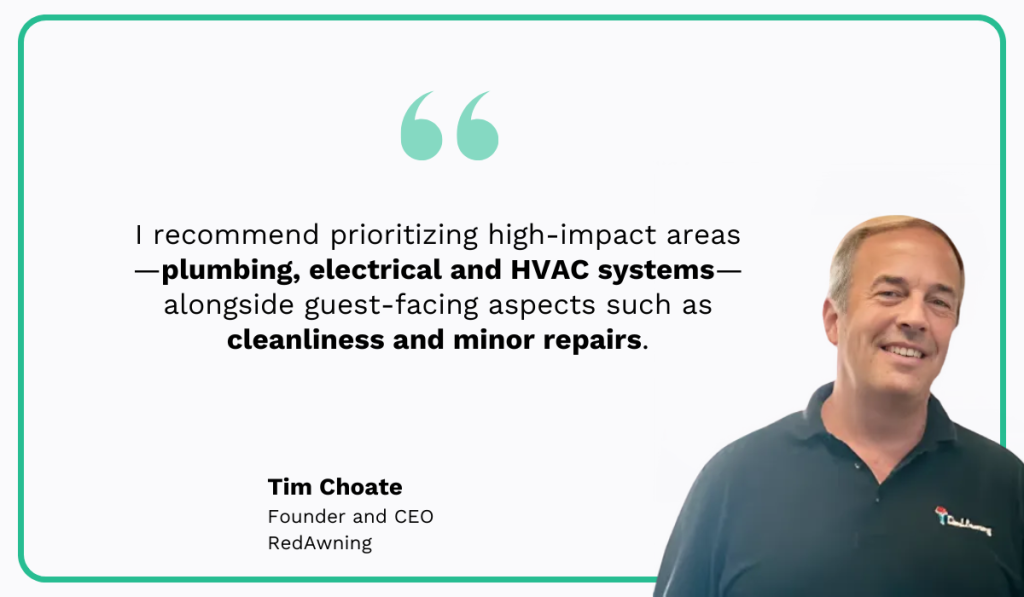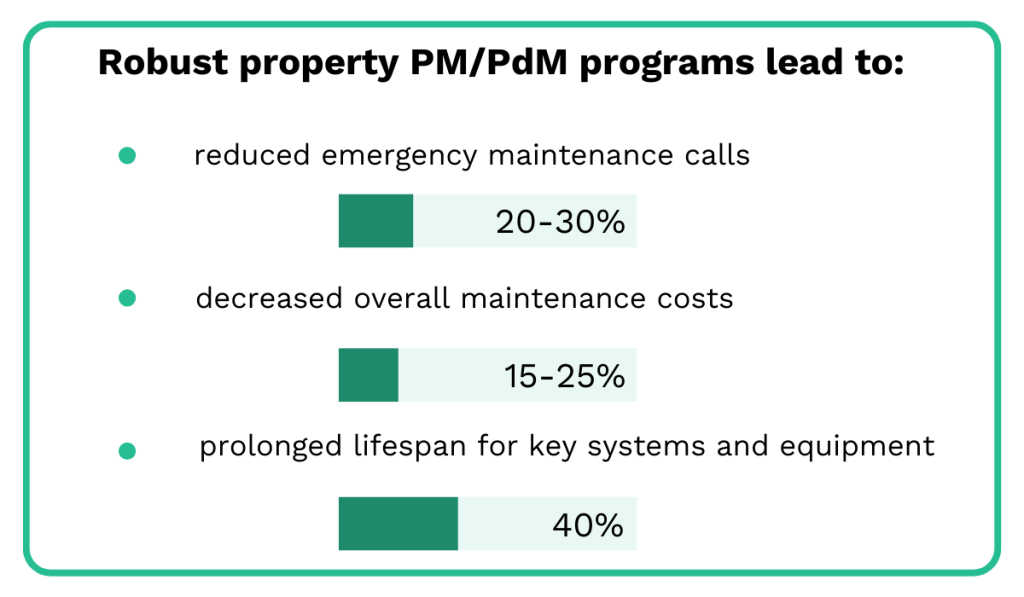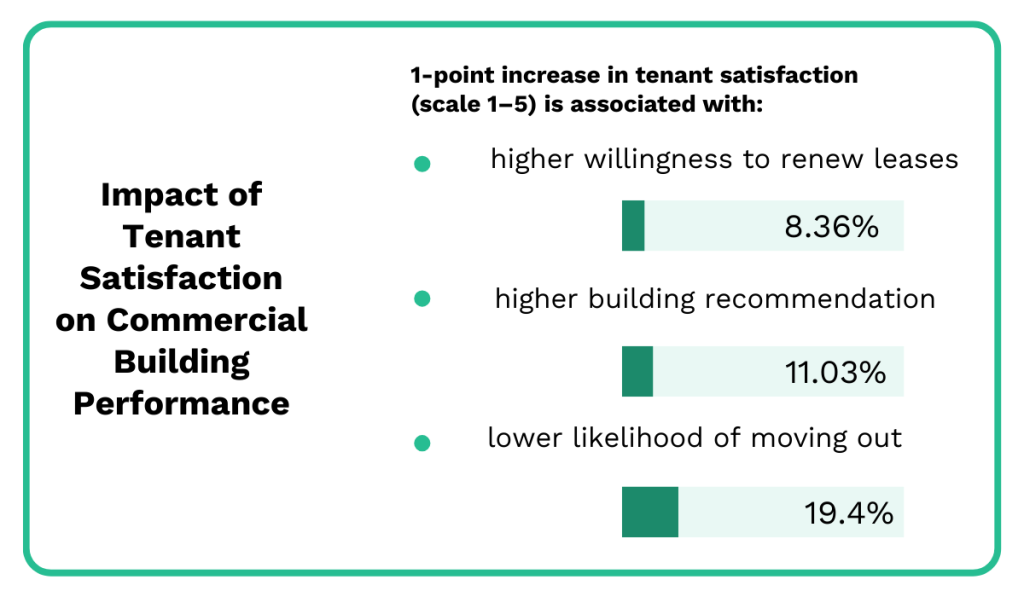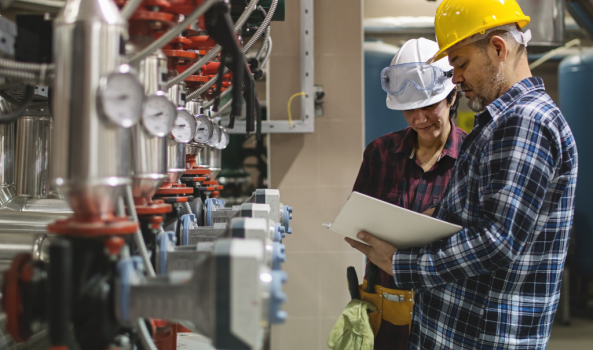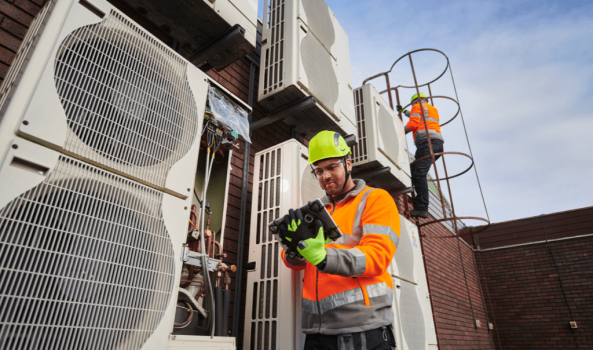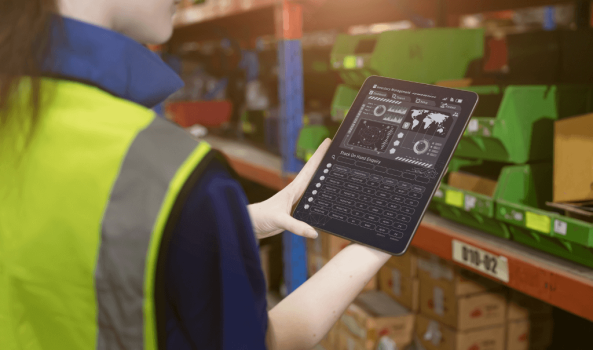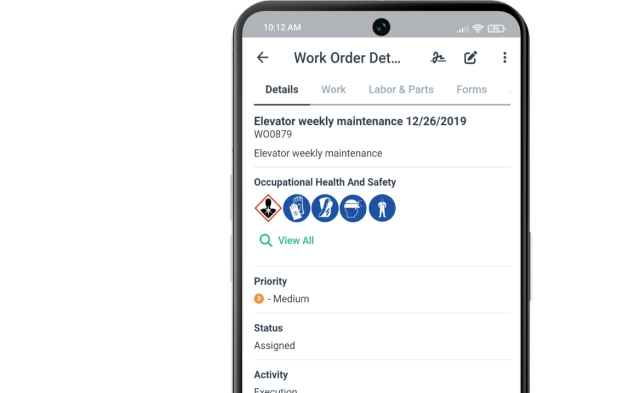Get a Free WorkTrek Demo
Let's show you how WorkTrek can help you optimize your maintenance operation.
Try for freeKey Takeaways:
- Property maintenance depends on property type, regulatory requirements, management considerations, and the right maintenance strategy.
- Strong programs use a mix of reactive, preventive, risk-based, and condition-based maintenance to ensure tenant safety and comfort while protecting property value.
- Well-maintained properties see 20–30% fewer emergency calls and 15–25% lower maintenance costs.
- Success comes from combining digital tools, standardized workflows, well-trained staff, and IoT monitoring.
Property maintenance might not always take center stage, but it’s essential for keeping buildings and their surroundings safe, functional, and valuable.
Effective maintenance ensures occupant satisfaction, reduces safety risks, and preserves property value.
In this guide, we explain what property maintenance involves, its main types, the benefits it offers, and best practices for managing it effectively.
What is Property Maintenance?
Property maintenance, often equated with building maintenance, refers to the ongoing care and repair of a building, its systems, and its surroundings.
The goal is to ensure the safety and comfort of occupants, while also preserving the long-term value of property owners.
Property maintenance is a subset of property management, which encompasses broader responsibilities, including leasing, tenant relations, and financial oversight.
To highlight this distinction, the following visual illustrates the difference between property management and property maintenance activities.
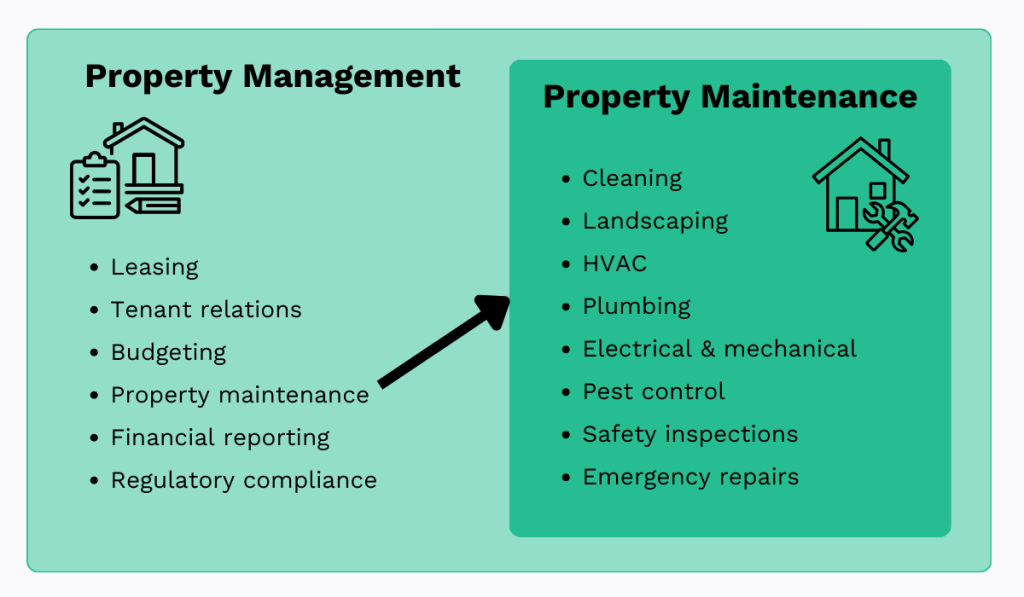
The list of activities on the right indicates that a property maintenance team is responsible for a wide variety of upkeep tasks.
Some of them, such as cleaning common areas, landscaping, pest control, or plumbing, are often outsourced to specialized contractors.
The balance between in-house staff and external providers usually depends on the property’s size, type, and budget considerations.
It’s also important to consider that different property types require different maintenance approaches.
Below, you can see some common commercial and residential property types, which help property managers understand how responsibilities may vary across settings.
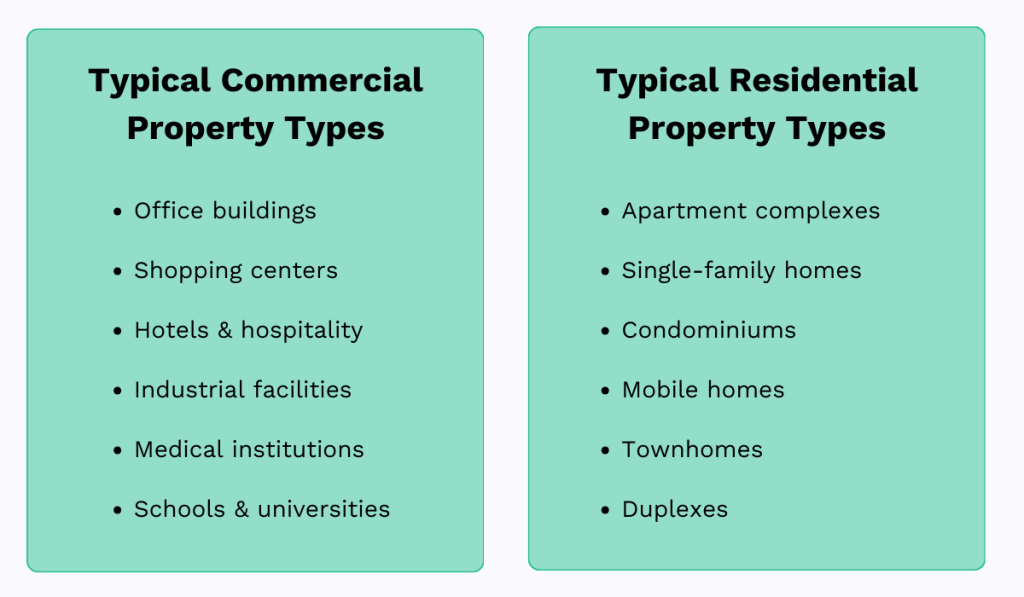
For example, larger commercial buildings, apartment complexes, or mixed-use facilities often employ dedicated maintenance teams to manage daily operations, inspections, and minor repairs.
In contrast, smaller residential buildings or single-family homes typically rely more on external contractors for specialized services.
Regardless of the approach, property maintenance regulations are another factor to consider.
Most countries enforce their own building codes, safety standards, and maintenance regulations.
In the U.S., many local authorities follow the International Property Maintenance Code (IPMC), developed and published by the International Code Council (ICC).

The IPMC is a model code, updated annually, that establishes minimum requirements for maintaining and using existing buildings.
When local authorities in the U.S. adopt the IPMC, its provisions become legally binding within that jurisdiction.

Beyond the U.S., many countries adopt similar principles into national laws to ensure building safety and consistent standards for property maintenance.
In many cases, the work itself is not the only aspect regulated.
Whether in-house or outsourced, some property maintenance staff, such as electricians, plumbers, and HVAC technicians, are also subject to licensing and certification requirements.
Types of Property Maintenance
Property managers implement various maintenance approaches. The approach depends on whether their goal is to prevent problems, respond quickly to breakdowns, or reduce expenses by concentrating on high-impact areas.
Broadly, property maintenance falls into four categories:
- Reactive maintenance
- Preventive maintenance
- Risk-based maintenance
- Condition-based maintenance
Each approach contributes to keeping properties safe, functional, and cost-effective.
To understand when and why these strategies matter, let’s first look at the most common issues property managers deal with every day.
Below are the top 10 most frequent property maintenance issues compiled by PropertyMeld:
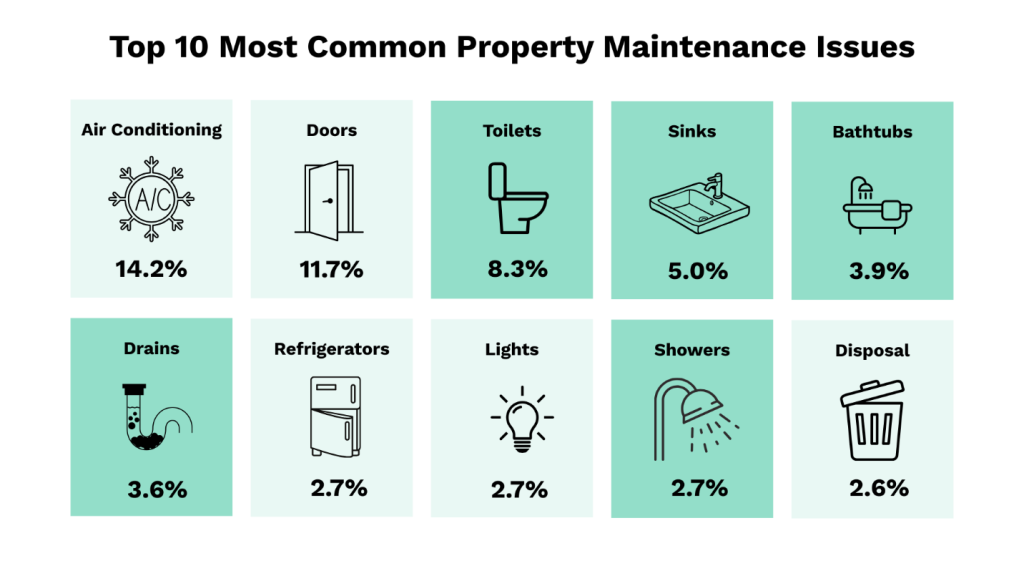
As you can see, plumbing dominates the workload, which highlights why property maintenance teams need a mix of strategies.
While some plumbing issues can be prevented with routine checks, many incidents, such as sudden leaks, burst pipes, or clogged drains and toilets, occur without warning and must be addressed immediately.
This is reactive maintenance, which involves responding to unexpected breakdowns or failures as they occur.
Other examples include elevator malfunctions, HVAC system failures, or electrical outages.
However, many of these problems can be prevented through planned preventive maintenance (PM or PPM).
Ryan Windsor, co-founder of HMO Architects, explains what PM is about:
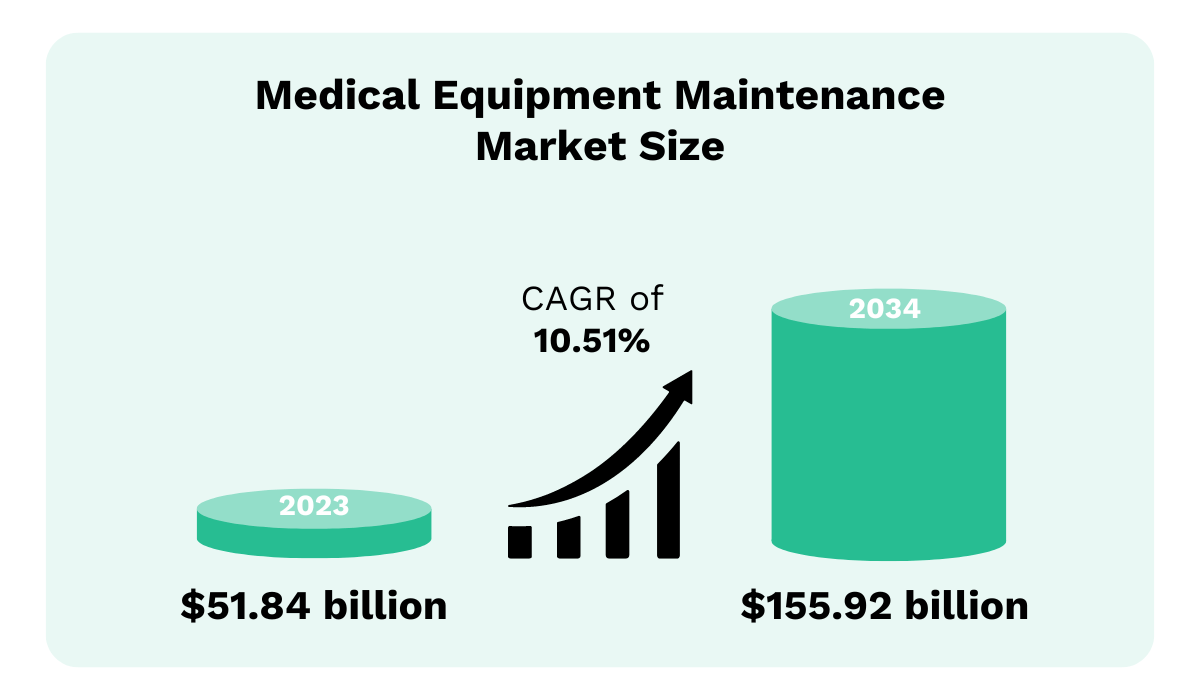
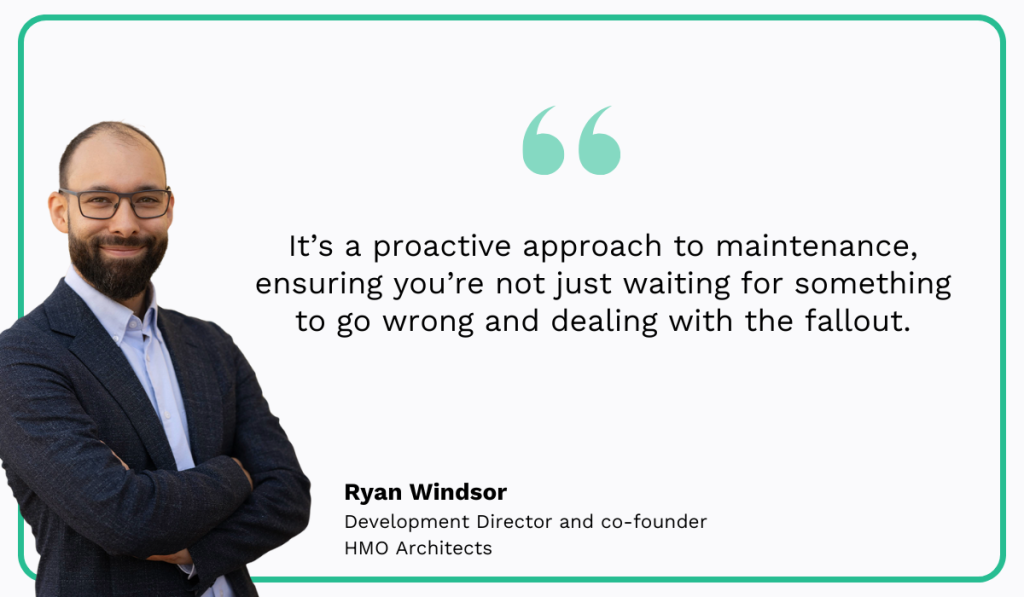
He adds that PPM can lead to improved operations, fewer costly failures, and a more profitable property portfolio.
Preventive maintenance involves routine tasks that keep a property running smoothly and reduce unexpected repairs.
Common examples include:
- Regular building system servicing (HVAC, elevators, etc.)
- Routine inspections for leaks or wear (walls, ceilings, roof, etc.)
- Cleaning common areas and landscaping (gutters, walkways, grounds, etc.)
- Inspecting safety equipment (smoke detectors, sprinklers, fire extinguishers, etc.)
With preventive measures in place, property managers can implement risk-based maintenance, which prioritizes assets whose failure carries the highest risk.
Air-conditioning failure is a typical example that often affects resident satisfaction.
Tim Choate, CEO of RedAwning, a solution for vacation rental owners, recommends this risk-based approach:
Choate adds that a robust risk-based property maintenance plan should also include PM measures, such as routine system checkups and safety protocol inspections.
This demonstrates why property maintenance teams employ a mix of strategies, the last of which is condition-based maintenance.
This method focuses on monitoring equipment or building systems for early warning signs of failure, such as unusual noises, vibrations, or wear patterns.
For example, sensors can track elevator system performance variables like vibration, temperature, and load.
When readings indicate excessive wear or anomalies, maintenance is scheduled to replace or repair components before a failure occurs, as illustrated below.
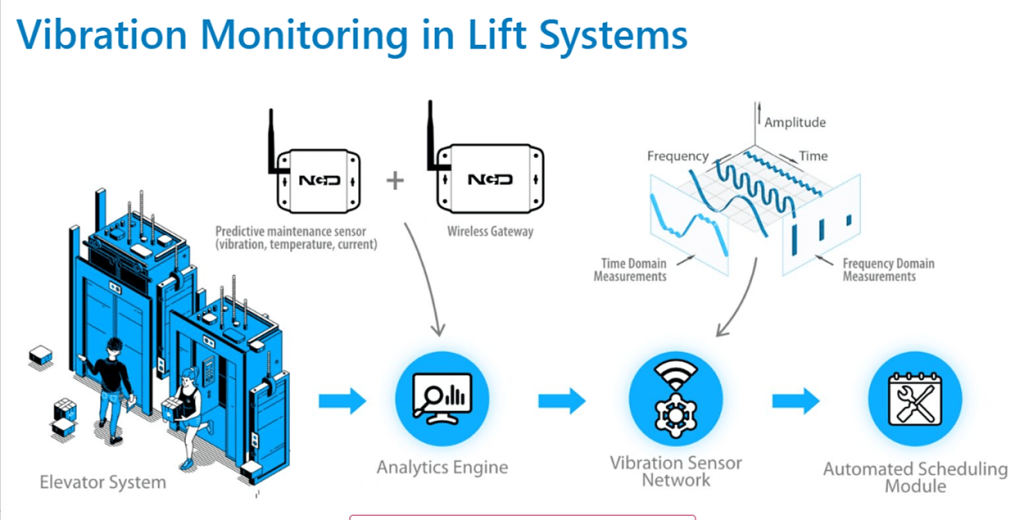
Today, with IoT sensors and AI, condition-based maintenance evolves into predictive maintenance, enabling teams to anticipate issues before they arise.
By combining reactive, preventive, risk-based, and condition-based strategies and leveraging modern technology, property maintenance teams can optimize operations and stay ahead of potential problems.
When these approaches are combined effectively, they form a comprehensive maintenance framework that delivers tangible benefits.
Benefits of Property Maintenance
Organized property maintenance offers numerous benefits, including enhanced property safety, increased efficiency, and improved long-term value.
One of the most immediate advantages is a reduction in unexpected equipment breakdowns.
As previously discussed, preventive and predictive maintenance strategies enable property teams to:
- Identify issues early
- Avoid costly emergency repairs
- Keep critical building systems operating reliably
According to Gatewise, properties with strong preventive maintenance programs report measurable improvements, such as fewer emergency calls, lower costs, and longer system lifespans, all resulting from reduced equipment breakdowns.
A well-structured maintenance program also helps avoid costly liabilities tied to accidents and safety incidents.
When critical assets like elevators, fire systems, or plumbing are neglected, the risks extend beyond property damage. Tenants, visitors, and even maintenance staff can be exposed to serious harm.
One example comes from the CPWR report, which found that elevators cause about 17,000 injuries and 30 fatalities each year in the U.S.
To illustrate the risks, here’s just one of many news stories linked to alleged property maintenance failures.

Examples like these show that property maintenance is ultimately about people as much as buildings.
When tenants and visitors feel safe, they are more likely to trust property managers and remain satisfied with their experience.
Reliable HVAC, consistent lighting, and smoothly operating elevators all directly contribute to daily comfort.
This comfort has a strong influence on tenant satisfaction, which is one of the primary drivers of retention.
A study by Maastricht University of more than 2,900 U.S. office buildings found that even a 1-point increase in satisfaction yields measurable advantages for landlords:
This also shows why effective property maintenance directly impacts property value and investment returns.
Well-maintained buildings require fewer costly repairs over time, slow depreciation, and support better energy efficiency.
Addressing issues promptly prevents minor problems from escalating into major structural or system failures.
As Zoe Harper from Steadily, a landlord insurance company, notes:
“A well-maintained property not only retains its value but also attracts and keeps good tenants.”
When responsive building management, timely repairs, cleanliness, and safety are all in place, they create a reinforcing cycle of satisfaction and reliability.
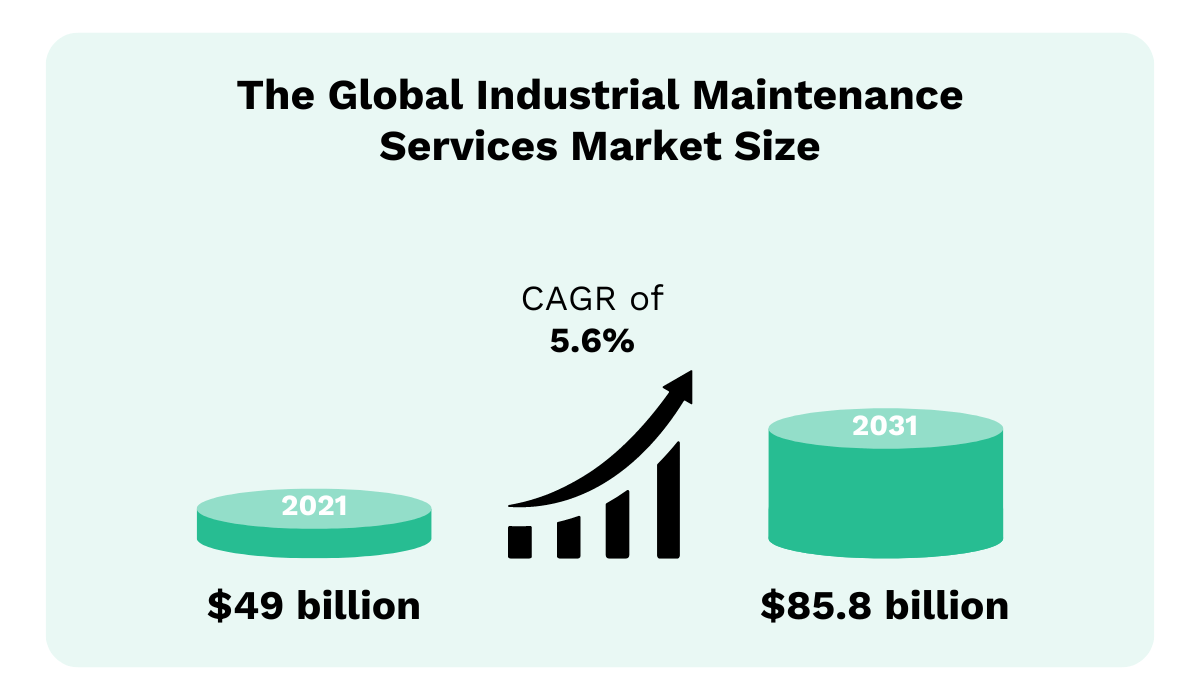
Ultimately, a well-designed and implemented property maintenance program delivers long-term financial and operational benefits for owners, managers, and tenants.
Now, let’s explore some best practices that make these outcomes possible.
Best Practices for Property Maintenance
Effective property maintenance requires systems and processes that keep residents safe, satisfied, and confident in the property’s management.
One of the most impactful best practices is enabling tenants to report issues through multiple channels, ensuring problems are addressed quickly and efficiently.
Beyond in-person requests and phone calls, this includes allowing residents and on-call staff to report issues digitally from their smartphones or computers.
A mobile maintenance management app (CMMS) facilitates this by enabling:
- Property occupants to submit maintenance requests
- Property managers to create and assign work orders
- Staff and technicians to receive requests and report on completion
Our CMMS, WorkTrek, further streamlines reporting with QR codes that link tenants to a web request form.
You also have the option to create a branded app for your property.

Once a maintenance request is submitted, the property manager reviews and approves it.
Depending on the type and urgency of the issue, they then create a work order, assign it to available in-house technicians or outsourced providers, and set the appropriate priority level.
This streamlined process ensures that no request is overlooked and that critical issues are addressed promptly.

From there, managers can track the status of all work orders.
They can also plan costs and compare planned versus actual expenses to keep the financial side under control.
Beyond digital apps, modern property management increasingly leverages IoT sensors, AI, and predictive maintenance tools.
These technologies monitor equipment and building systems in real-time, detect anomalies, and help anticipate potential failures.
For example, a CMMS integrated with IoT sensors can trigger alerts not only on a time-based schedule (e.g., every month) but also based on meter readings (e.g., temperature exceeding a set threshold).

Another critical best practice focuses on people.
A significant part of property management is how janitors, in-house staff, and external vendors interact with tenants and collaborate.
Their professionalism and technical expertise are equally important.
To ensure effectiveness and consistency, property teams should:
- Ensure staff and providers hold the appropriate qualifications and certifications
- Provide adequate training and the right tools to perform their jobs efficiently
- Standardize workflows and SOPs, such as digital checklists
Here’s an example of a checklist for elevator inspection, which illustrates how standardized workflows help ensure consistency and compliance.
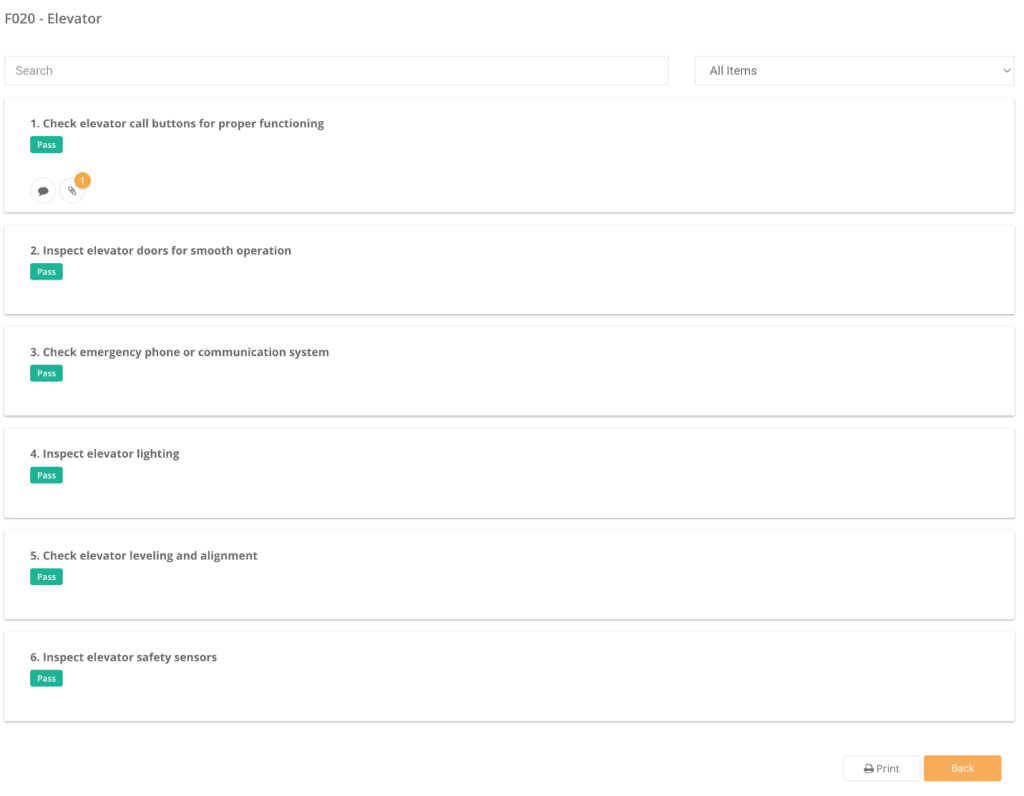
Digital tools, IoT-enabled monitoring, standardized workflows, and well-trained staff are essential for property teams who want to resolve issues efficiently, maintain high safety and comfort standards, and enhance tenant satisfaction.
Finally, the effectiveness of any property maintenance program depends on tracking outcomes and measuring resident or occupant satisfaction.
Metrics like completed work orders, response times, and tenant feedback help property managers identify where processes can be refined and improvements made.
In summary, adopting these best practices creates a sustainable cycle of operational excellence, protects property value, and keeps tenants safe and satisfied.
Conclusion
Having covered the essentials, a few final notes remain.
First, property maintenance goes beyond cleanliness and fixing what’s broken. It also includes service performance, risk management, and tenant satisfaction.
Second, the right technology, structured processes, and skilled staff enable managers to establish proactive maintenance.
This ensures resident safety and comfort, protects long-term property value, and maximizes returns.
All this makes investing in effective maintenance one of the smartest decisions property owners can make.




